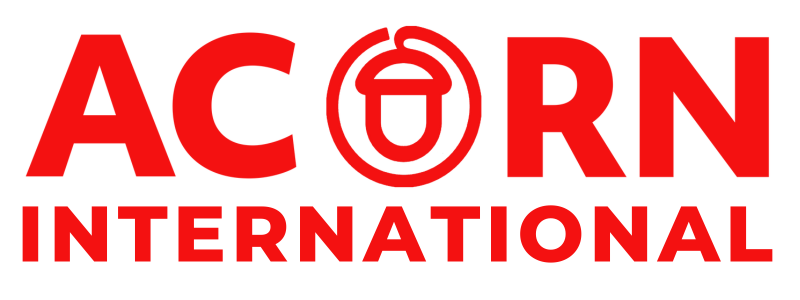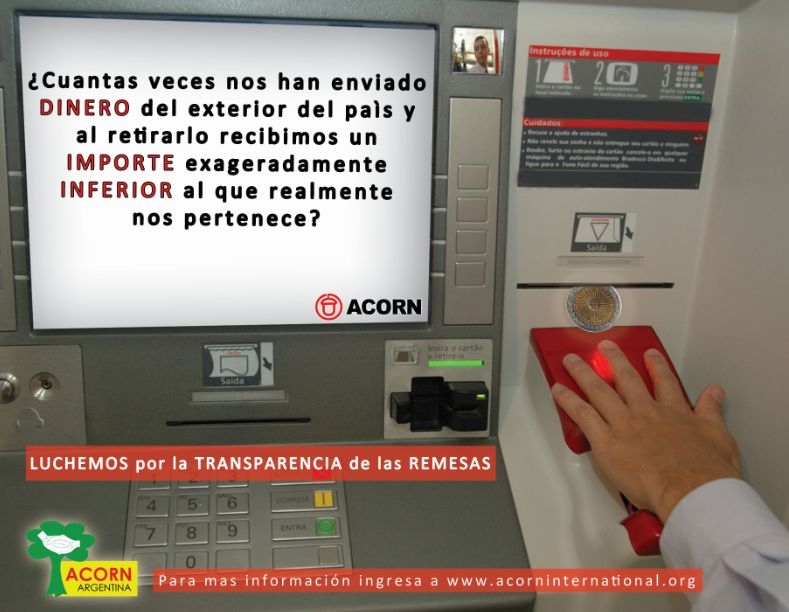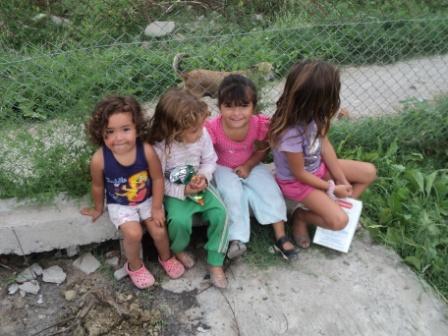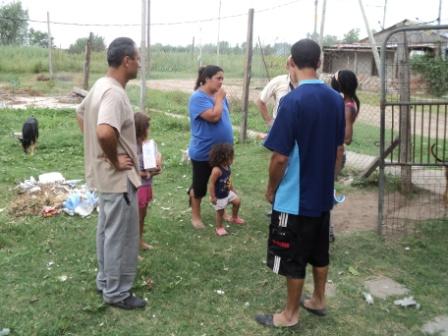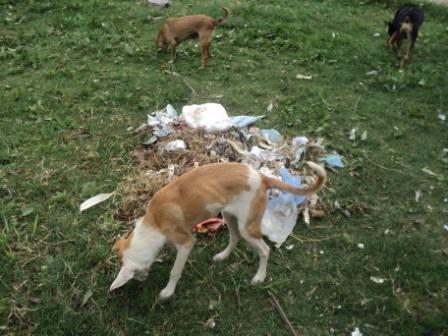Your cart is currently empty!
Blog
-
Wells Fargo response
BMO Financial ResponseView more documents from ACORN International. -
BMO Response
BMO Financial ResponseView more documents from ACORN International. -
La Matanza
La Matanza, barrio y limpieza.
La Matanza neighborhood and cleanup.
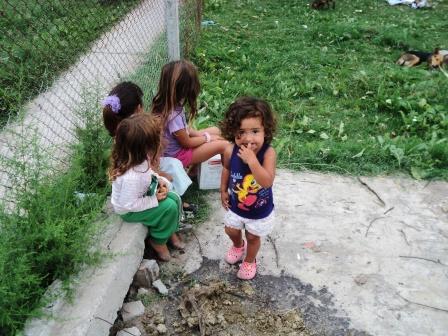
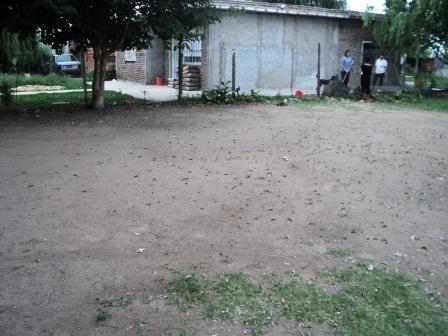
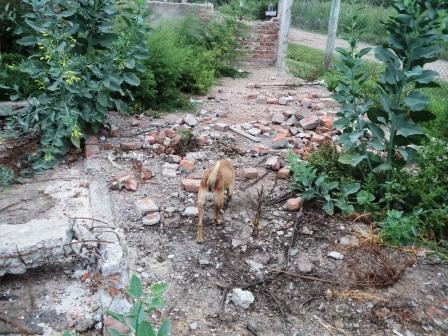
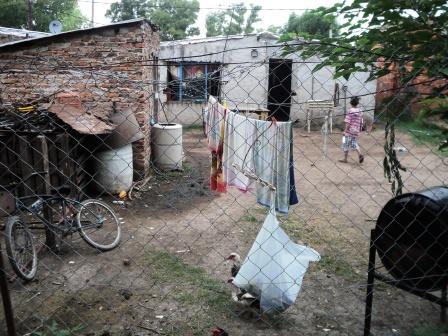
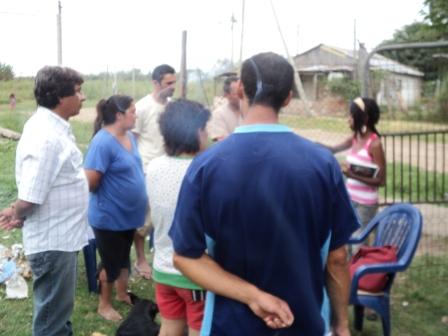
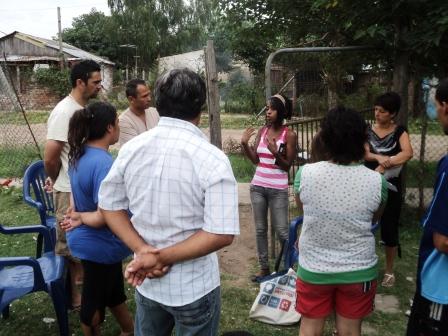
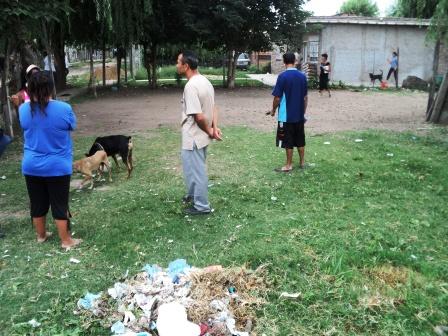


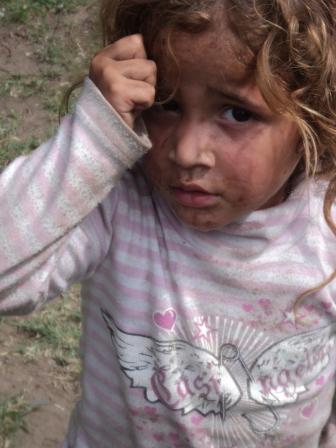
-
Community Development Committee Meeting
Below are the minutes from the Community Development Committee Meeting held on September 13, 2010
COMMUNITY DEVELOPMENT COMMITTEE
MEETING (CDC)
DATE September 13 2010
VENUE Christ Devine Church KB
TIME 2.30 PM
Introduction
Community Development Committee (CDC) is an initiative of an organization called Concern World.It facilitated the formation of a fifteen member committee in all the villages in Korogocho.Each village committee was mandated to select and prioritize issues in their areas for a common action.
They were encouraged to source out for any technical and financial support on their own and were advised to be meeting once per months to deliberate on their issues.
All villages in their prioritized issues indicated education as one of the key areas of their focus and in fact to majority of them this was the starting point in their mid term goals. The CDC committee of KA through CONCERN invited committee members from other villages to come and share ideas on how they are tackling the education issue. They had identified ACORN Kenya Trust as a potential partner to work with and were to facilitate the forum whose main agenda was campaigns on education.
The process
The meeting started at 2.30pm with a word of prayer said by one of the CDC members from KA.
Mr. Kairu who is also the Chairman of that area made an opening remark and took members through the agenda of the day which was ‘education campaign’.
He also welcomed Mr.Owino the area chief who was present in the meeting to give his remarks. The chief assured all the members present of his knowledge about the meeting however, he informed the participants that he will not be for the discussion because he was handling some other visitors in the office. He also informed participants that Madam Chief could not attend the meeting as she was recapturing from an operation of a broken limb in the hospital. He encouraged members of Korogocho to continue with such meetings meant for development and officially declared the forum open before leaving together with RC Chairman who was also mourning the death of his Sisters’ child.
Attendance
- All villages had sent more than eight representatives with the exception of Gragon A which had two representatives and Gragon B that had no single representatives.
- CONCIRN representatives confirmed their attendance but would come late.
- Two community organizers from ACORN Kenya Trust were in attendance.
ACORN Kenya Trust
It was prudent for the organization to introduce itself as way of levelling of as a facilitator of the forum.
David Musungu took members through a brief profile of the organization.
ACORN is an Association of Community organization for Reforms Now. It is a new model of organizing adapted from America. It organizes community in the low and middle income areas for social, economic and political empowerment. The organization was founded in America forty three years ago by its chief organizer Mr.Wade Rathke and currently has branches in other counties like Canada, Peru, Argentina, Dominican Republic, India and now in Kenya where rolled out its programmes in 2009 in the two villages of Highridge and Kisumu Ndogo.
Myriad of issues were identified through caucuses, meetings and other dialoguing forums. Some of these were,
- Insecurity
- Environmental issues
- Water and sanitation
- Extreme poverty
- Health
- Education
- Youth issues
- Women issues
However education, health and sanitation were prioritized in that order.
ACORN intends to carry out campaigns on these issues’
Education campaign strategy of Acorn
Sammy Ndirangu took members through this item.
Education as an issue was given a priority as it is interrelated to all other issues highlighted above.
There is a big gap between the transitions from primary school and secondary school. About 10% of students who sit for the primary education examination are able to make it to the next level but the rest who constitutes the lager number no one who knows what happens to them. Others who make it to the secondary school end up dropping out of the school before even sitting for their form exams due to inability to meet the school fees and other basic requirements.
As all this happens, there are funds from the government devolved kitty in form of bursary fund which is supposed to assist these poor families for their children to access secondary education and tertiary collages such as CDF, LASDAP and ministry of education bursary fund. Very few pupils’ from Korogocho if any who have been able to benefit from the kitty and members of the community claims that this has not been in a smooth way. There are claims that the few who get it had do bribe or get it after a long and tedious process. The Question of where the rest of the funds go remains still a mystery to many of the residents.
Mr. Sammy said that Korogocho as a community has a right to these monies and its accountability.
The availability of a polytechnic in the area was also questionable. Majority of members do not know of its existence.
The government in it budget of 2009-2010 made a commitment to support these institutions. Students within these institutions are also being offered in form of bursary an average kshs.15, 000 per year for their training. Very few of community members know about this information which is critical for their own development.
It is in this line that Acorn Kenya is launching its campaign on matters of Education in the area. However ACORN Kenya can not win this campaign alone, the two villages of Highridge and Kisumu Ndogo can never win this campaign alone. It requires a concerted effort from all of Korogocho residents and other actors working in the area of education.
To succeed more facts are required, like the number of students not going to school, the number of those in school but can not access the funds and the real cases of studies of parents and guardians who have straggled to access the bursary fund but in vein.
Challenges
Members of the CDC were convinced that education was indeed a thorny issue in Korogocho and needed to journey together as a community to campaign and streamline the sector.
Peoples mind were however destructed when;
- A few members from the committee of Kisumu Ndogo engaged in petty issues within their ACORN committee.
- Same members did not understand the level of involvement of ACORN in the whole process of CDC.
- Other members claimed to have been given a different agenda on their invitation.
- Still others were expecting for some payments of money from CONCERN.
These led to some members matching out in protest.
Way forward
It was agreed that ACORN approaches individual CDC from every village and agree on how and when to convene for village level meetings first. This will then culminate to an area wide meeting for the same campaigns.
This idea was supported by the members of CONCERN who came in later and who also promised to do the follow-up as to why these CDC leaders behaved in this manner.
The meeting ended with a word of prayer at 4.20pm.
Minutes compiled by CO Acorn –Kenya
Cc. to Cos Redeemed Church
Cc. to the area Chief Mr. Owino
-
ACORN Kenya October 2010 Report
ACORN KENYA TRUST
OCTOBER REPORT 2010 7/11/2010
Introduction
The month of September 2010 saw a lot of energy and time directed towards the finalizing the analysis report on education situation in Korogocho.However,other areas of engagement were still going on as summarized bellow.
NO
ITEM
STATUS
ACHIEVEMENT
CHALLANGES
1.
Membership building
- Membership building in progress
- Acorn community strong and cohesive
- Highridge has attained a membership of 480.Atcive ones are 300.
They meet on monthly basis
- Kisumu Ndogo has 350 members. Active ones are 200.They meet on monthly basis.
- There is a demand from the other villages to engage them in organizing
- How to keep and sustain fire burning among Acorn members
- Majority of members not active
2.
Leadership building
- Leadership in both areas still ad hoc
- Highridge has 14 leaders. They meet twice per month.
- Kisumu ndogo has also 14 leaders who meet twice per month.
- Some leaders are yet to understand the principles, philosophy and concept of Acorn. They want to work and operate the NGO way.
3.
Dues
- Monthly dues collection in both villages still irregular
- Highridge collections in September 2400
- Kisumu ndogo collected 1600
- Majority of members can’t afford to pay the monthly dues because of extreme poverty.
4.
Capacity building
- Leadership training in both villages in progress
- Have training 24 Acorn community leaders in conflict management
- Good leadership.
- Lack of funds to carry more leadership training
- Ways to motivate leaders to own the ownership process of organizing
5.
Acorn registration
- Registration of the organization as Acorn Kenya Trust is in advanced stage
- The deed has been approved and the registration number is 2131
- The lawyer informed us that the process of acquiring the Certificates takes a longer period but with the approval of the Deed the Organization is now fully recognized.
6.
Field office
- The field office yet refurbished
- Managed to acquire a field office within the community
- The office needs to be fully refurbished.
7.
Account opening
- Opening the organizations account is in progress
- The organization has selected Kenya commercial Bank among other institutions as its bank
- Two bank signatories from the community have already been identified. One from Highridge and the other one from Kisumu ndogo
- One community member has not acquired a personal pin number which is one of the mandatory requirements in opening a bank account.
- This has delayed the process of opening the account.
8.
Issue based campaign
- The campaign on education is at advanced stage
- Held a stake holders forum on 25th September 2010.
- 50 people attended
- Disseminated information on education situation in Korogocho.
- The campaign on education is complex and of high conflict
Which way now?
The way forward from the stake holder’s forum is for Acorn Kenya Trust to hold village to village meetings share and get more information from the community. This will culminate into a big campaign covering the whole of Korogocho as shown in the campaign schedule.
EDUCATION CAMPAIGN
SCHEDULE OF THE ACTION PLAN
Village to village forums on education campaigns
- Target is 300 people per village
- Final campaign will target 2,500 people
village
Activities
Dates
Venue
Expected output
Requirements
KA
- Disseminate information on Education
- Plenary reactions
- Sharing personal experiences
- Way forward
16-11-2010
- Information on education disseminated to at least 100 people
- Recommendations on how to improve education in KA
- Real experience on the agony of accessing bursary fund
- Tactics and strategies designed on how to face the targets .
- Venue
- Seats
- Tea and snacks
- Air time for community mobilization
- Documentation and other materials
KB
- Disseminate information on Education
- Plenary reactions
- Sharing personal experiences
- Way forward
18-11-2010
- Information on education disseminated to at least 100 people
- Recommendations on how to improve education in KB
- Real experience on the agony of accessing bursary fund
- Tactics and strategies designed on how to face the targets.
- Venue
- Seats
- Tea and snacks
- Airtime for community mobilization
- Documentation and other materials
Kisumu Ndogo
- Disseminate information on Education
- Plenary reactions
- Sharing personal experiences
- Way forward
19-11-2010
- Information on education disseminated to at least 100 people
- Recommendations on how to improve education in Kisumu dogo
- Real experience on the agony of accessing bursary fund
- Tactics and strategies designed on how to face the targets.
- Venue
- Seats
- Tea and snacks
- Air time for community mobilization
- Documentation and other materials
Highridge
- Disseminate information on Education
- Plenary reactions
- Sharing personal experiences
- Way forward
18-11-2010
- Information on education disseminated to at least 100 people
- Recommendations on how to improve education in Highridge
- Real experience on the agony of accessing bursary fund
- Tactics and strategies designed on how to face the targets.
- Venue
- Seats
- Tea and snacks
- Air time for community mobilization
- Documentation and other materials
Grogon A
- Disseminate information on Education
- Plenary reactions
- Sharing personal experiences
- Way forward
16-11-2010
- Information on education disseminated to at least 100 people
- Recommendations on how to improve education in Grogon A
- Real experience on the agony of accessing bursary fund
- Tactics and strategies designed on how to face the targets.
- Venue
- Seats
- Tea and snacks
- Airtime for community mobilization
- Documentation and other materials
Grogon B
- Disseminate information on Education
- Plenary reactions
- Sharing personal experiences
- Way forward
19-11-2010
- Information on education disseminated to at least 100 people
- Recommendations on how to improve education in Grogon B
- Real experience on the agony of accessing bursary fund
- Tactics and strategies designed on how to face the targets.
- Venue
- Seats
- Tea and snacks
- Airtime for community mobilization
- Documentation and other materials
Gitathuru
- Disseminate information on Education
- Plenary reactions
- Sharing personal experiences
- Way forward
23-11-2010
- Information on education disseminated to at least 100 people
- Recommendations on how to improve education in Gitathuru
- Real experience on the agony of accessing bursary fund
- Tactics and strategies designed on how to face the targets.
- Venue
- Seats
- Tea and snacks
- Airtime for community mobilization
- Documentation and other materials
Whole of Korogocho
- Rally
- Memorandum
- Petitions
Korogocho community centre
- Venue hire
- Posters
- Airtime for mobilization
- T/shirts
- Refreshments
- Media coverage
- Documentation
Sammy Ndirangu
David Musungu
-
Support Letter from CUPW
Support letter from CUPW- the Canadian Union of Postal Workers- and it’s President joining our call for remittance regulation at the Provincial and Federal level in Canada.
CUPW Support LetterView more documents from ACORN International -
Support Letter from CUPW
A support letter from CUPW- the Canadian Union of Postal Workers- and it’s President joining our call for remittance regulation at the provincial and federal level in Canada. -
Article about our campaign on the Calgary News & Views
Bank fees ‘killing’ migrant workers: ACORN
‘We’re trying to end this predatory practise by the banks and financial agencies’
Published March 3, 2011 by Trevor Scott Howell in NewsAn international community-based, low-income advocacy organization is calling on the Canadian government to regulate the “predatory” remittance industry.
The Association of Community Organizations for Reform Now (ACORN) says the unregulated practise of charging up to 50 per cent for money transfers — a $400-billion industry according to the World Bank — is punishing migrant workers and immigrants, many of whom send money to their families back home.
“The remittance fee is killing us,” says Kay Bisnath, president of ACORN International. “Migrant workers’ and immigrants’ families depend on the money that their loved ones in Canada and around the world send to their homeland.”
Bisnath says banks and money transfer businesses can charge as much as 50 per cent in remittance fees. A migrant worker sending $100 to their family can be charged between $32 and $35 through the TD Bank, says Bisnath. “When you have to pay all these remittance fees, what are the loved ones left with?”
ACORN is calling for the Canadian government to limit the amount banks and financial institutions can charge to five per cent.
“We’re trying to end this predatory practise by the banks and financial agencies,” says Bisnath.
